Green Roof Types
Extensive green roofs
Extensive green roofs are normally intended to be viewed from another location as visual or ecological features, and are usually not trafficked. The more prevalent types of green roof which have hardier, more drought tolerant species of plants such as sedums, mosses, and wildflowers fall within the Extensive sector.
Extensive green roof systems generally provide a visual or biodiversity interest and are considered to be less suitable as an amenity or leisure space. They are generally designed to support plants with a lower maintenance requirement, e.g. sedums, grasses, mosses and some wildflower species. These planting types are able to survive on shallower substrate depths than other types of plants, require lower nutrient levels and little or no irrigation requirement (when correctly designed and installed irrigation is generally only required in the initial establishment phase, and then very rarely afterwards).
Sedum species are well adapted to their use within extensive green roofs. They are drought tolerant, able to withstand extremes in climate and can grow on relatively shallow substrates. There are many species with a range of form and colour, and generally flower from early summer to autumn. Sedum are able to survive on shallow substrate depths, lower nutrient levels and little or no irrigation requirement (when correctly designed and installed irrigation is generally only required in the initial establishment phase, and then very rarely afterwards).
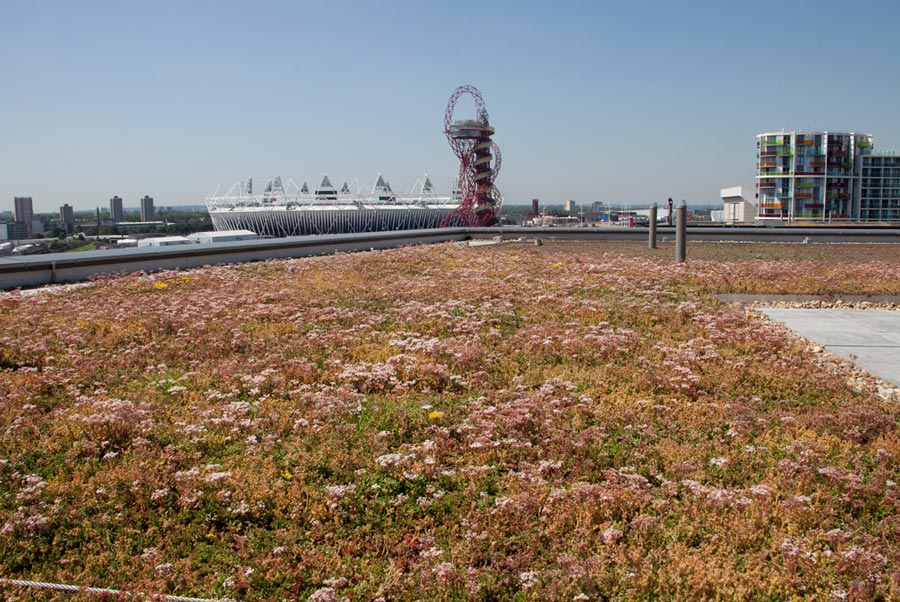
Sedum green roofs are generally planted using pre-grown mats/blankets containing mixes of sedum species and/or planted with species of young sedum plug plants and/or seeded with a mix of seed and/or sedum cuttings.
An intermediate green roof type that can include characteristics of both extensive and intensive roofs. Typically requiring a substrate depth of 100 – 200mm, a wider range of plants can be included compared to extensive green roofs, including shrubs and woody plants. Irrigation and maintenance requirements are dependent upon the plant species installed.
Biodiverse Green Roofs
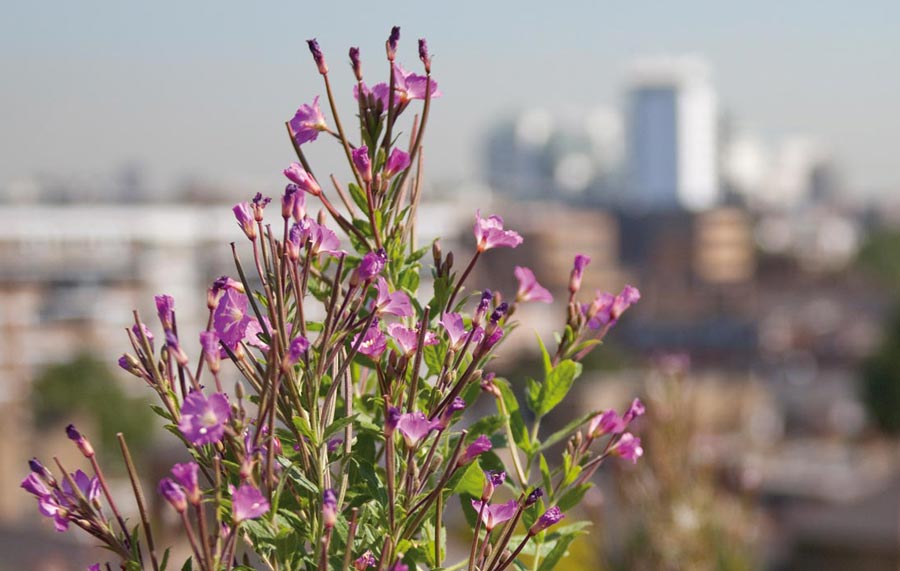
Extensive green roofs designed specifically to create habitats for plants and animals can be termed Biodiverse (or Brown) roofs. These types of roofs are becoming increasingly specified in urban areas in order to recreate habitat lost by the development.
As the name suggests Biodiverse roofs are created primarily for biodiversity purposes and can aim to recreate the habitat that was lost when the building was erected, or even enhance it.
A ‘Green’ biodiverse roof would generally be broadcast with an appropriate seed mix (often wildflowers and grasses), and/or planted with species of plug plants (often wildflowers, sedums and grasses) to encourage specific plant types that will support certain bird and invertebrate species. Pre-grown mats containing mixes of drought tolerant wildflowers, grasses and herbs can also be installed to provide a more “instant” cover.
This category includes the ‘Brown’ biodiverse roof or “Brown Roof” which is not purposefully planted. The growing medium is selected and installed to allow indigenous plant species to inhabit the roof over time.
Substrate depths may vary across the roof deck to promote a diversity of both shallow and deep rooted plants and ones which are more and less drought tolerant. Undulating substrate depths also create differing habitats for a greater range of invertebrate species. Pebbles, boulders, gravels, sands, branches and logs may also be placed within the system to offer suitable habitats.
The “management” of a biodiverse type green roof very much depends upon what the client requires. It can be managed more heavily to produce a controlled “wildflower meadow” type environment. Less management input may lead to the development of vegetation which progresses naturally relating to the prevailing conditions.
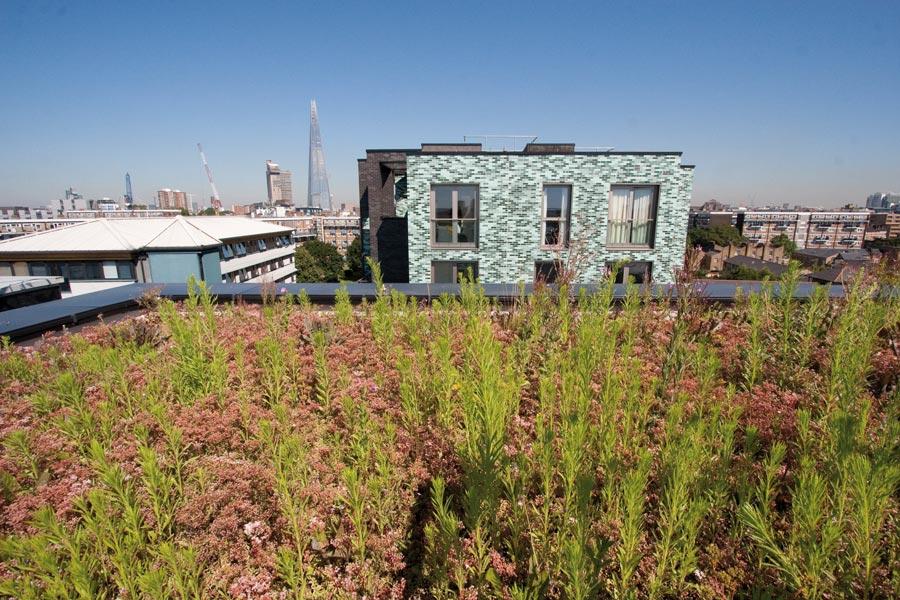
Intensive Green Roofs
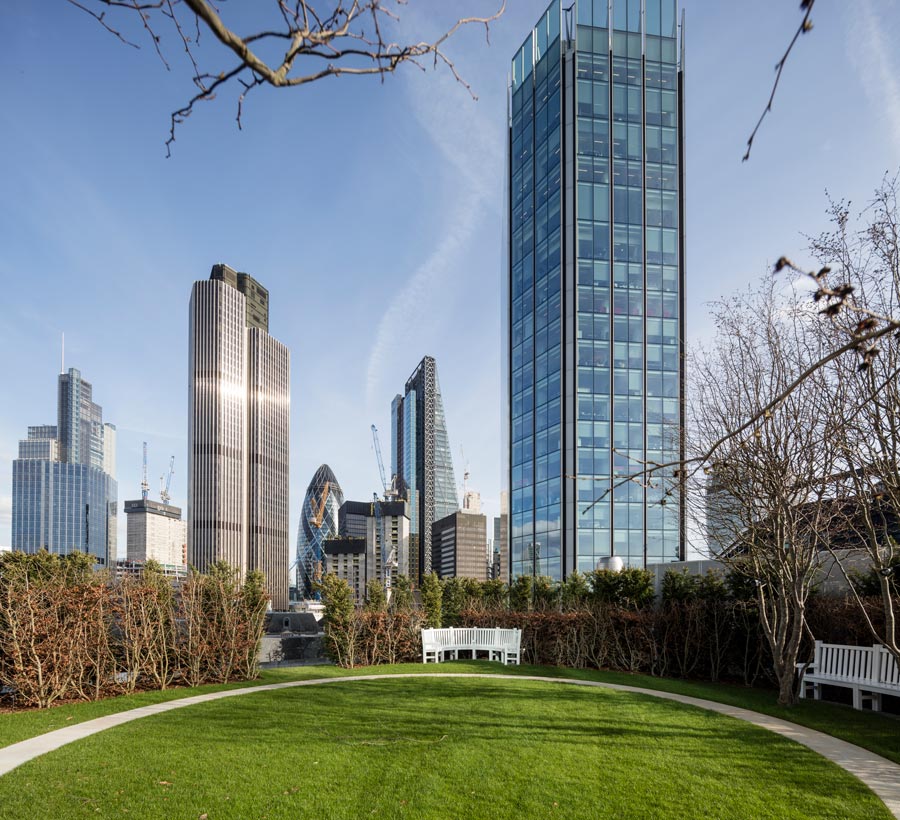
Intensive systems are generally those types which are used as recreational spaces and often include similar features to traditional parks and gardens such as shrubs, trees, paving, lawns and even water features.
Intensive green roofs (also termed Roof Gardens) are principally designed to create recreational and amenity spaces for people to enjoy. They are generally accessible and contain features similar to traditional gardens including lawns, trees, shrubs and hard landscaped areas. Intensive green roof systems involve using greater substrate depths (usually above 200mm) and often create a larger weight loading on the roof. Intensive green roof systems require a higher level of maintenance, including regular irrigation.
An intermediate green roof type that can include characteristics of both extensive and intensive roofs. Typically requiring a substrate depth of 100 – 200mm, a wider range of plants can be included compared to extensive green roofs, including shrubs and woody plants. Irrigation and maintenance requirements are dependent upon the plant species installed.
